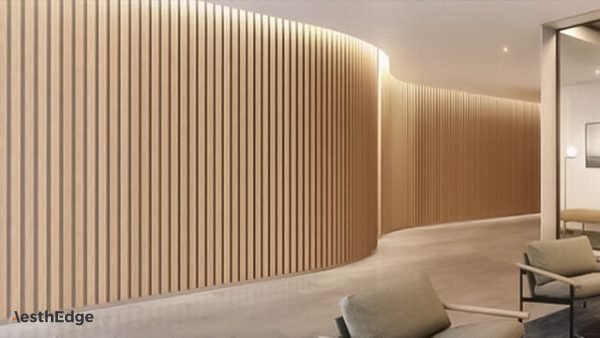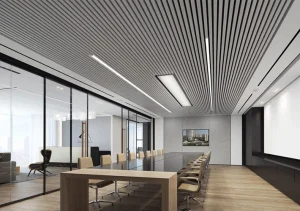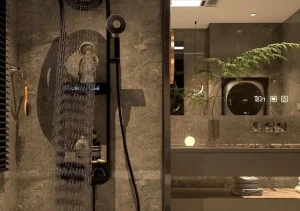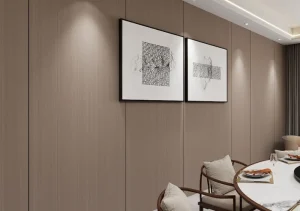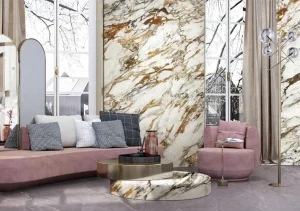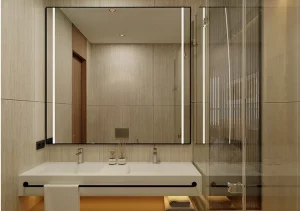3D wall panels have gained significant popularity in contemporary interior design, especially in living rooms. They add depth, texture, and a unique aesthetic appeal that can transform an ordinary space into a stunning environment. This article will explore the various types of 3D wall panels commonly used in living rooms, their materials, benefits, and design applications, providing insights to help homeowners and designers make informed choices.

Table of Contents
ToggleTypes of 3D Wall Panels
1. Textured PVC Panels
Description:
PVC (polyvinyl chloride) panels are lightweight, water-resistant, and versatile. Textured PVC panels come in various designs, including waves, geometric patterns, and organic shapes. They can mimic the appearance of natural materials while being easier to maintain.
Usage in Living Rooms:
- Accent Walls: Often used as statement walls behind sofas or entertainment units.
- Backdrops for Art: They can serve as a textured backdrop for artwork, enhancing the visual appeal of the piece.
- Sound Absorption: PVC panels can help reduce sound reflections, making the living room more acoustically friendly.
2. Wooden 3D Panels
Description:
Wooden 3D panels provide a warm, natural look that brings the essence of nature indoors. These panels can be crafted from various types of wood, including oak, pine, and bamboo, and can be stained or painted to match the room’s decor.
Usage in Living Rooms:
- Rustic Themes: Perfect for rustic or farmhouse-style living rooms, creating a cozy atmosphere.
- Modern Elegance: Sleek, polished wooden panels can add sophistication to modern designs.
- Feature Walls: They can be used to create stunning feature walls that draw attention and provide a sense of depth.

3. Gypsum 3D Panels
Description:
Gypsum panels are made from natural gypsum and are known for their fire-resistant properties. They are available in a variety of intricate designs, from floral patterns to abstract shapes.
Usage in Living Rooms:
- Ceiling Features: Gypsum panels can also be used on ceilings, adding a unique element to the room.
- Wall Partitions: They can serve as stylish dividers in open-plan living areas, helping define spaces.
- Textural Contrast: Mixing gypsum panels with smooth finishes can create a captivating contrast.
4. Metal 3D Panels
Description:
Metal panels, such as aluminum or stainless steel, offer a contemporary and industrial aesthetic. They are durable, easy to clean, and can reflect light, enhancing the brightness of the space.
Usage in Living Rooms:
- Urban Chic Designs: Ideal for loft-style apartments or modern homes with an industrial theme.
- Accent Features: Often used to highlight specific areas, such as around a fireplace or media wall.
- Artwork and Installations: Metal panels can be incorporated into art installations, making them focal points in the living room.
5. Fabric-Wrapped Panels
Description:
These panels are wrapped in fabric and come in various colors and textures. They are often used for acoustic purposes, helping to absorb sound and reduce echo in living spaces.
Usage in Living Rooms:
- Softening Hard Surfaces: Ideal for modern living rooms with many hard surfaces, fabric panels add softness and warmth.
- Color Coordination: Easily customizable to match the existing color scheme and decor.
- Artistic Expression: Can feature patterns or prints, contributing to the overall artistic expression of the room.
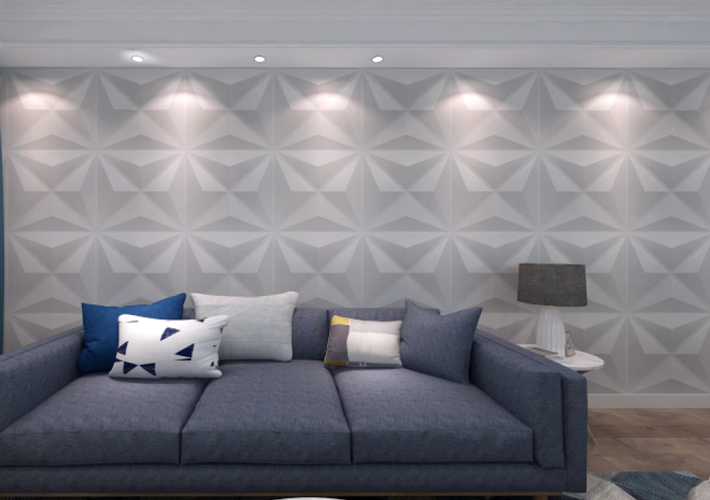
Benefits of 3D Wall Panels
1. Aesthetic Appeal
3D wall panels provide a unique visual interest that flat surfaces cannot achieve. They enhance the overall design of the living room, making it more inviting and stylish.
2. Versatility
Available in various materials, colors, and designs, 3D wall panels can complement any decor style, from traditional to contemporary. They can be mixed and matched to create personalized spaces.
3. Easy Installation
Many 3D wall panels come with user-friendly installation systems, allowing homeowners to transform their spaces quickly and efficiently without the need for professional help.
4. Durability and Maintenance
Most 3D wall panels are designed to be durable and easy to maintain. PVC and metal panels, in particular, resist moisture and stains, making them suitable for high-traffic areas.
5. Acoustic Benefits
Certain types of 3D wall panels, particularly fabric-wrapped and gypsum, can help improve acoustics in living rooms, making them quieter and more comfortable.
Design Applications
1. Creating Focal Points
3D wall panels can be used strategically to create focal points in a living room. By highlighting a particular area, such as a fireplace or entertainment unit, they draw attention and add depth.
2. Enhancing Lighting
The texture of 3D panels can play with light and shadows, enhancing the overall ambiance of the living room. Lighting fixtures can be positioned to highlight the panel designs, adding to the visual drama.
3. Color Play
Using different colors for 3D panels can add vibrancy to a living room. Neutral tones can provide a calming effect, while bold colors can energize the space.
4. Layering Textures
Combining 3D panels with other materials, such as wallpaper or painted walls, can create a layered look that adds complexity and interest to the design.
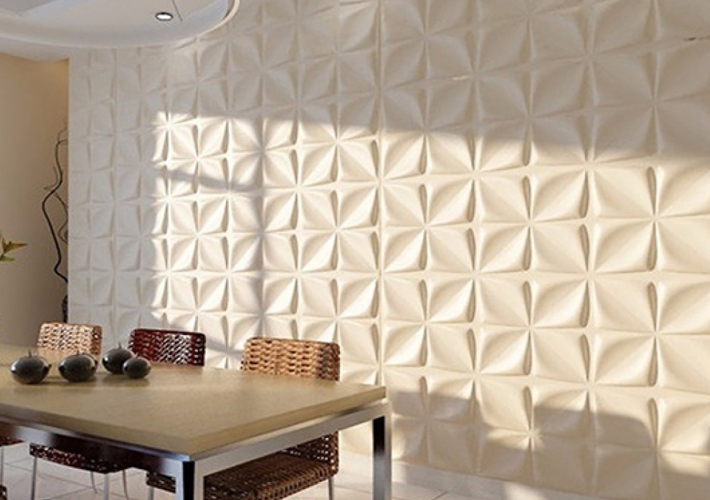
Conclusion
3D wall panels are an innovative and stylish choice for enhancing the aesthetics and functionality of living rooms. Their versatility in design, material, and application makes them suitable for a wide range of decor styles. Whether opting for textured PVC, elegant wood, or contemporary metal, these panels can transform any living space into a visually captivating environment.
By understanding the various types of 3D wall panels and their benefits, homeowners can make informed decisions that reflect their personal style and meet their design needs. As trends continue to evolve, 3D wall panels will likely remain a popular choice for those seeking to elevate their living rooms to new heights of design excellence.

